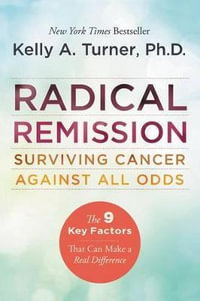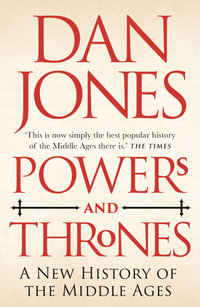
Moral Debates in Contemporary Catholic Thought
Paradigms, Principles, and Prudence
Paperback | 3 February 2025
At a Glance
Paperback
RRP $53.99
$41.75
23%OFF
Available for Backorder. We will order this from our supplier however there isn't a current ETA.
In an opinion piece on the 2023 political standoff on raising the debt ceiling New York Times pundit David Leonhardt observed that this sort of story was particularly difficult for journalists to cover because it was neither what he called a "100 percent" nor a "50 percent" story. He went on to explain that a "100 percent" story was one in which the facts of the underlying reality were clear, for example, that Joseph Biden had indeed won the 2020 U.S. presidential election, and that global warming was certainly taking place. A "50 percent" story by contrast involved a reality in which issues were so genuinely open to sharply divergent analyses that the only way to be fair in handling these would be to cover in as an even-handed manner as possible all of the various reasonable views. In this category he put "tax rates, abortion, border security and religion in schools," adding that such "disputes are more about values and priorities than underlying reality."
Yet there were other stories, he said, that do not fit in either category, since these often involve disputed facts and contested evidence that can be marshalled to one side or the other of the argument. He called this last group the "90 percent stories." It is in this last category that the most protracted and difficult debates tend to occur since each position can make "claims that are much more grounded in truth although neither side has a monopoly on it."
Leonhardt's taxonomy of journalistic categories can be applied with just a bit of tweaking to moral theology, and it reflects what I'm trying to do in this book. Certainly some issues, hotly debated for centuries, are now seemingly settled. For instance, while today some individuals, including a very limited number of professional moral theologians, may still contest the ethical legitimacy of medical termination of an ectopic pregnancy, using Leonhardt's categories we could term this a "100 percent" case.
As we see, though, in other areas of our shared life these principles are not always supported across the political, social or religious spectrum. For example, a "100 percent" case in official Catholic magisterial teaching that still has a ways to go before it reaches strong consensus in the pews would be the continued use of the death penalty. At the other end of the spectrum we still have many debates in the Catholic moral tradition that could be located in Leonhardt's "50 percent" stories. Even though there are some magisterial statements in some of these cases, moralists themselves remained divided over what are the morally relevant features and ethical principles that should be considered. Certainly one contemporary debate that would qualify as a "50 percent" issue would be the concrete ethical, ecclesial, social and pastoral responses to make towards individuals or groups of people who suffer from gender dysphoria. Chapter 4, Gender Debates in a Principled Prudence Perspective, will outline these sorts of approaches to an important, yet still very contested, issue.
The majority of the chapters in this book would fall into the "90 percent" category. Here we can find a good deal of consensus in theory, but significant disagreements in discernment and application of the elements of those theories. Perhaps the area in which these "90 percent" debates surface most significantly revolve around our electoral process and Chapter 5, on Exercising Faithful Citizenship in a Principled Prudence Perspective, will unpack both the theory and the conscience-based decisions an informed and responsible electorate must make.
While politics has often been described as the "art of compromise," we seem to be very short on such artists in the current climate. The concluding Chapter 7: A Principled Prudence Perspective in Working for the Common Good in a Divided World will attempt a survey of the landscape and then suggest a possible path forward drawing on the central moral concept of the common good.
ISBN: 9781538199770
ISBN-10: 1538199777
Published: 3rd February 2025
Format: Paperback
Language: English
Number of Pages: 264
Audience: College, Tertiary and University
Publisher: ROWMAN & LITTLEFIELD PUBLISHERS
Country of Publication: GB
Dimensions (cm): 22.7 x 15.2 x 2.2
Weight (kg): 0.35
Shipping
| Standard Shipping | Express Shipping | |
|---|---|---|
| Metro postcodes: | $9.99 | $14.95 |
| Regional postcodes: | $9.99 | $14.95 |
| Rural postcodes: | $9.99 | $14.95 |
How to return your order
At Booktopia, we offer hassle-free returns in accordance with our returns policy. If you wish to return an item, please get in touch with Booktopia Customer Care.
Additional postage charges may be applicable.
Defective items
If there is a problem with any of the items received for your order then the Booktopia Customer Care team is ready to assist you.
For more info please visit our Help Centre.
You Can Find This Book In
This product is categorised by
- Non-FictionReligion & BeliefsChristianityChristian Churches, Denominations, GroupsRoman Catholicism
- Non-FictionReligion & BeliefsChristianityChristian Theology
- Non-FictionReligion & BeliefsAspects of Religion for Non-ChristiansTheology
- Non-FictionReligion & BeliefsReligionReligious Issues & DebatesReligious Ethics
- Non-FictionReligion & BeliefsChristianity



![NRSV Catholic Bible Gift Edition [White] : Holy Bible - Thomas Nelson](https://www.booktopia.com.au/covers/200/9780785230380/2211/nrsv-catholic-bible-gift-edition-white-.jpg)








![NIV Holy Bible Soft Touch Edition [Black] - Zondervan](https://www.booktopia.com.au/covers/200/9780310450474/null/niv-holy-bible-soft-touch-edition-black-.jpg)










